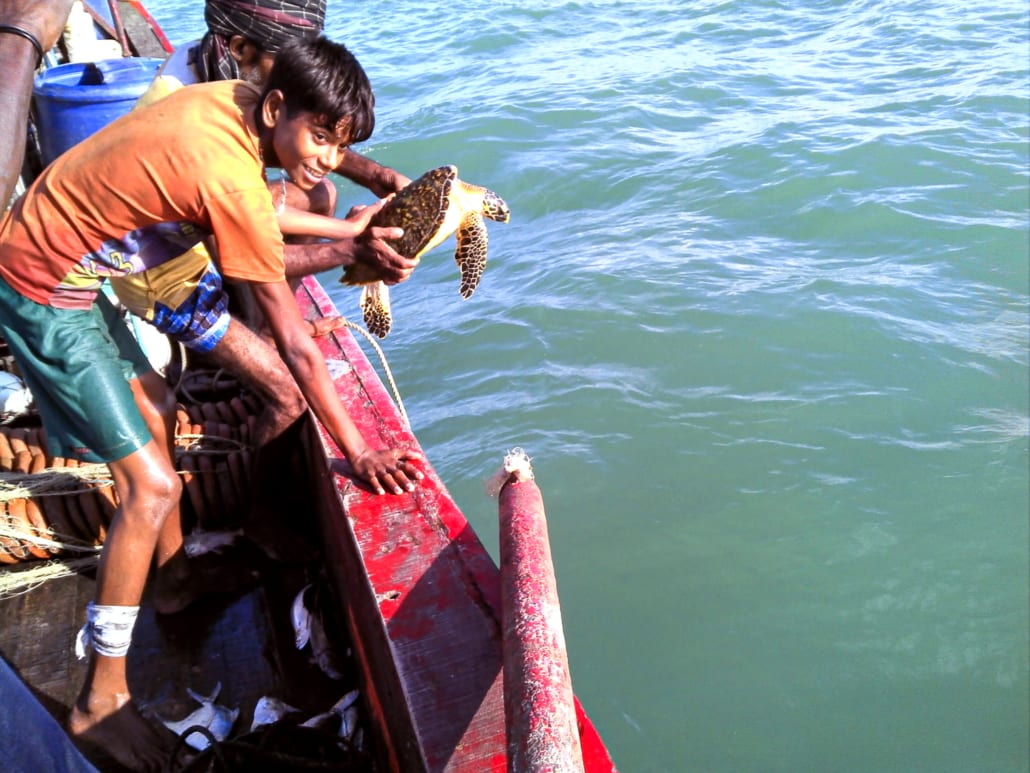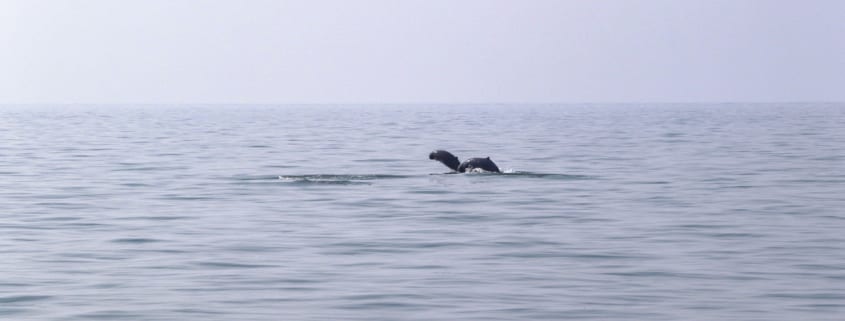New Marine Protected Area in Bay of Bengal
Rainforest Trust and local partner Wildlife Conservation Society (WSC) recently worked together to establish the Nijhum Dwip Marine Protected Area (MPA) in the northern Bay of Bengal in Bangladesh. The new protected area encompasses 1,222 miles of brackish water habitat at the mouth of the Ganges, Brahmaputra and Meghna Rivers, which come together to create the world’s third largest river system. The MPA will play an important role in connecting marine conservation in the region to productive fisheries and other offshore protected areas.
According to a recent at-sea survey conducted by WCS, the waters of Nijhum Dwip are a biodiversity hotspot home to an array of iconic marine wildlife. Some of the world’s largest populations of endangered dolphins, porpoises, sharks, rays and marine turtles can be found in the MPA.

Citizen scientists releasing the Critically Endangered Hawksbill Turtle. Photo by WCS.
The new protected area will safeguard at least 15 threatened marine species, including the Endangered Irrawaddy Dolphin, Olive Ridley turtle and Scalloped Hammerhead shark. The habitat will also serve as key spawning grounds and provide migration routes for the Hilsa shad, Bangladesh’s most treasured species of fish. Known locally as the “King of Fish,” the Hilsa shad is considered a delicacy due to its soft and oily texture. The sustainable catching and consumption of this fish is critical to Bangladesh and its communities. The Hilsa fishery employs about 2.5 million people and generates over 1.3 billion dollars for the national economy.
“Declaration of the Nijhum Dwip MPA is a huge opportunity for marine conservation in Bangladesh,” said Dr. Wahab Md Abdul, Team Leader for the USAID supported EcoFish Project. “This is due to its location that covers habitat vital to the spawning and migration of the economically valuable Hilsa shad and for protecting of threatened marine biodiversity, including charismatic wildlife such as dolphins and hammerhead sharks.”

Bottlenose Dolphin and survey vessel. Photo by WCS.
Marine species are not the only wildlife that are set to benefit from Nijhum Dwip. The intertidal mudflats shared by the MPA and the Nijhum Dwip National Park serve as critical migratory feeding habitat for a variety of threatened shorebirds, including the Critically Endangered Spoon-billed Sandpiper.
The new MPA is a critical step in creating an effectively managed network of marine protected areas in Bangladesh. The protection of this habitat will provide safety for marine biodiversity at global risk of extinction, and sustain fisheries vital to food security, local livelihoods and the national economy.
Header image: Endangered Irrawaddy Dolphins leaping. Photo by WCS.




